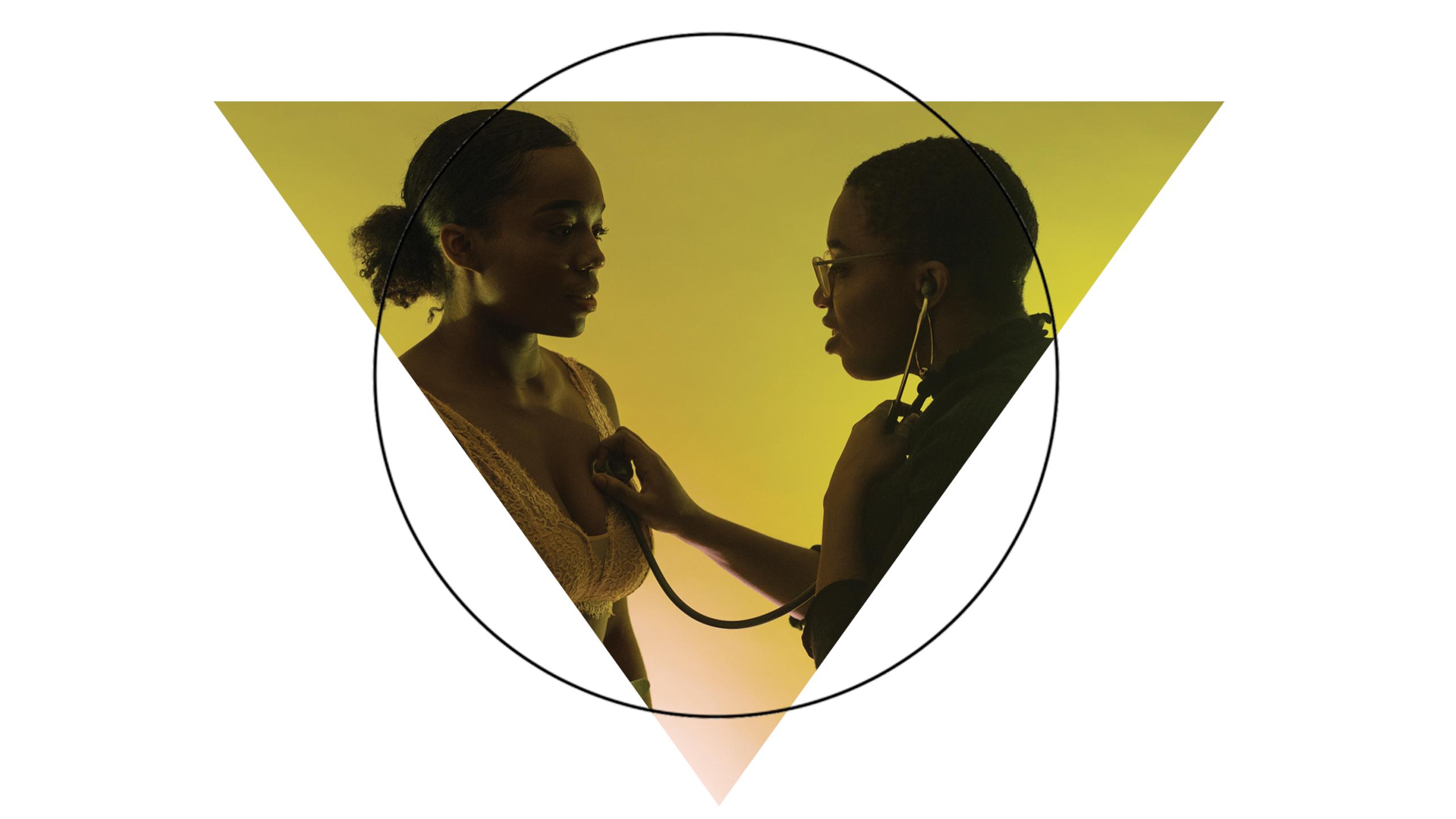For some women of colour, the medical system can be tricky to navigate
By Premila D’Sa
Content warning: This story incudes graphic descriptions of medical treatment.
The paper lining they put on hospital beds rubs me the wrong way. I always lie down a little too fast so I end up scrunching it up underneath me, and the little crinkles that form feel like blunt, tiny knives pushing into my back.
But this is what I’ve chosen to focus on—because what’s actually happening is way, way more uncomfortable. Below the powder-blue sheet draped over my naked legs, there’s a doctor shoving a cold, metal speculum into my vagina. If you haven’t seen a speculum, it’s a few design modifications away from being a pair of barbecue tongs. If you’re unlucky (like me) and clamp up during clinical tests, you can feel the sharp edges scrape past the walls of your vaginal canal.
But I’m trying not to think about it.
The doctor, who I had only met a couple minutes ago, inserts her lubricated fingers into me and starts probing around. I’m trying to focus on the lining (there have been so many incredible advancements in the medical field. I mean, we did surgery on a goddamn grape, why can’t we make softer bed paper?) but I can’t help but lean forward to take a peek at what’s going on down there.
The paper, the speculum, the grape—none of it mattered anymore. All my anxiety shifted toward my white doctor’s expression. Pure disgust. The type of disgust where wrinkles form between your eyebrows and your mouth sits open without you realizing it.
“You have an infection,” she said.
I was too startled to talk, but I didn’t have to because she kept on going. She pulled out her slicked fingers and wiggled them over the sheet.
“See? It’s just, like, gushing out.”
The next few moments were a blur as she talked about tests and appointments. The words “infection,” “gush” and the unspoken “ew” played in a continuous cycle in my head as I mechanically put on my pants, signed out of the clinic and bought a bar of dark chocolate from the Shopper’s across the street.
It was only by the time that I got on the streetcar, holding my 70-per-cent cacao and holding back my tears that I had processed what happened. That whole experience. It sucked.

Let me cut to the chase—I didn’t have an infection.
But the doctor’s reaction seemed like it could have come from a boy that found me gross. I had nothing to compare my doctor’s reaction to because not even the worst of my sexual experiences had involved someone being so disrespectful.
Going in for my follow-up appointment, I decided to share my experience with a counsellor before getting paired up with a doctor. I didn’t specifically ask for one, but they scheduled me with a doctor of Indian descent.
Things were already smoother. I felt my body relax. The doctor talked me through whatever she was doing. When she sensed even an ounce of stress, she would peek over the cover and check on me.
I brought up my results and the incident that prompted the test. She listened to me, her face slowly contorting into a frown. “Sometimes we operate differently and not all doctors know that,” she told me before apologizing for the experience.
Nichole Abamonga wishes more people talked about the stigmas people of colour face while navigating sexual health. Abamonga is a third-year nursing student who works at the AIDS Community of Durham Region. She’s been working while going to school, hoping to effect change, but even as a woman of colour, she knew going into her placement that her classes hadn’t trained her to deal with the specific needs of other racialized women. She especially realized this when she helped a Black patient brush back her hair during a consultation, and brought the wrong brush. “She looked at it and told me that it wouldn’t work for her hair.”
I had nothing to compare my doctor’s reaction to because not even the worst of my sexual experiences had involved someone being so disrespectful
Besides a first-year course that covers “cultural competency,” Abamonga never heard the topic discussed again.
In Colour Coded Health Care: The Impact of Race and Racism on Canadians’ Health, one of the few studies focusing on race in the Canadian healthcare system, researchers found that physicians didn’t believe they had a race issue. The study also showed that doctors believed that prejudices exist, but denied it played a role in their own work. They see their work as “culture-free.”
Swati Naidu is an HIV/AIDS community development coordinator at the AIDS committee where Abamonga works. She says while doctors say they don’t see colour, no care is being taken to meet people of colour’s specific needs.
Naidu’s trying to fill a major gap in the system—Canada doesn’t collect thorough statistics on all marginalized groups in healthcare. Naidu can’t fight for better policy when she can’t prove there’s a problem. “They probably see me as the angry brown woman coming into spaces,” said Naidu. “And I honestly don’t care because if you aren’t angry, are you really doing anything?”
But there is a problem—according to Colour Coded, Black and immigrant communities face high rates of HIV infections. In 2006, the Wellesley Institute found that Black people of Caribbean and African descent in Canada faced an infection rate 12.6 times higher than the general population. The study also found that immigrant women from “HIV-endemic” countries, which are mainly in Africa and South Asia, accounted for 50.8 per cent of new HIV diagnoses.
It was the “we” that really stuck with me as I headed out of the second appointment and jumped back on the streetcar, not crying this time.
“Sometimes we operate differently,” my doctor said.

While working at a Markham, Ont. hospital, Naidu saw a diverse team of medical professionals treating a diverse patient group. These physicians, she said, could work over language barriers. “A lot of the conversations were ‘how are you doing? I know this is difficult for you because my parents were immigrants,’” she said. And when my doctor said “we,” she helped get rid of an underlying shame that my body isn’t right—that it was always too hairy, or dark, or smelly.
To know that this doctor understood my body, not just because she was trained to, but because she had lived through it, was special.
The system was built around white women. The system is hurting women of colour, but Naidu hopes future students will be the solution.
Abamonga feels good about her work at the AIDS committee, even on the harder days.
These things will take time. But for now, we owe it to ourselves to push through, past the stigmas and the uncomfortable experiences, to take care of ourselves, to survive.










Leave a Reply